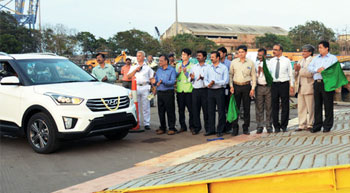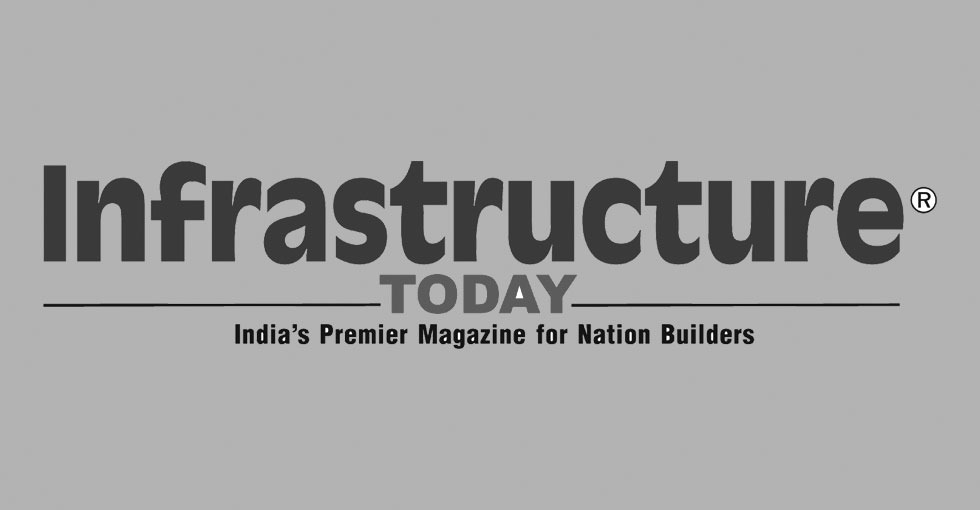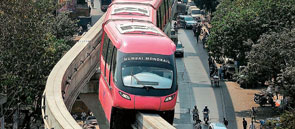India’s economy has seen a sharp rebound, writes Bharat Joshi, ACTL India’s economy has seen a sharp rebound after the first-two waves of the pandemic and as per the projections made by the International Monetary Fund (IMF), India is expected to be among the fastest growing major economies in the world in 2021 and 2022,...
FlashNews:
DFCCIL Pushes Fast-Track Plan for Gati Shakti Cargo Terminals
Chhattisgarh, GAIL Ink MoU for 1.27‑Million‑Ton Gas‑Based Fertiliser Plant
Noida International Airport Taps Tech Mahindra for 24×7 Cybersecurity Command Centre
Centre Approves ₹8.87 Billion Mumbai Marina to Boost Coastal Shipping and Maritime Tourism
PM Surya Ghar Rooftop Solar Scheme Crosses 1.95 Million Installations, Delivers 770,000 Zero Bills
Waaree Gets ALMM-II Nod for 5.25 GW Solar Cells
Inox Wind Secures Repeat 100 MW Order from Jakson Green
SITA Strengthens India’s Digital Aviation Infrastructure as Passenger Growth Accelerates
India moved from power scarcity to sustainability, says Piyush Goyal
GM Rao Urges Andhra University Alumni to Drive Innovation, Entrepreneurship and India Growth Story
India Begins Hydrogen Car Trials as Minister Joshi Drives Toyota Mirai to Parliament
MNRE Refutes Financing Pause; Calls for Expansion into Upstream Solar Manufacturing
IndiGrid to Acquire Gadag Transmission for ₹3.72 Billion
India Launches First All‑Electric Tug at Deendayal Port, Accelerates Green Maritime Shift
Bharatmala Pariyojana Executes 61% of Phase‑I Highway Targets, Boosts Freight Speed and Connectivity
Waaree Tops India’s Solar Module Shipments in Q3 2025, Reinforces Global Competitiveness
AISATS Expands Nationwide, Launches Ground Handling at Cochin Airport with Future‑Ready Tech
TIL Bags ₹2 Billion Orders Across Defence and Logistics, Validates Dual-Sector Strategy
Indian Railways to Roll Out OTP‑Based Tatkal Window Tickets Nationwide to Curb Misuse
Tag: International Monetary Fund
Funding National Waterways
India has remarkable potential of 14,500 km of navigable waterways. However, only 4,300 km comprising five waterways have been designated as National Waterways. Realising the exponential growth in this sector in the coming years, the government in the year 2016 has, under the National Waterways Act 2016, declared an additional 106 inland waterways which brings the total number of National Waterways to 111.
The future in India seems challenging, yet promising
Firstly, while the global market remains volatile and has an impact on the Indian economy, India is expected to retain a growth rate of 7.3 per cent for FY 2015-16, as per the International Monetary Fund (IMF).
Roads & highways – The road ahead: Challenges and possibilities
While the focus is on sprucing up national and state highways, and rightly so, the government must not forget about city, district and rural roads that need to be upgraded to address the burgeoning traffic.
Exemplary Figure
Former RBI Deputy Governor Subir Gokarn has been appointed as an Executive Director on the board of the International Monetary Fund (IMF).
Port of Call
The Indian port sector has gathered pace with the government´s focus on revival of the manufacturing sector through the ´Make in India´ campaign. The manufacturing sector is likely to drive the growth of the port sector as the carrier of cargo - ports
Urban projects: Chequered growth
The Cabinet Committee on Investment (CCI), according to latest reports, has unlocked 144 stalled infrastructure projects worth Rs 5.27 lakh crore. But experts don't see this reviving the fortunes of the Indian economy owing to the long gestation period of these projects.
IMF deputy head expects 5.8 per cent economic growth
In 2013-14, the Indian economy may expand 5.8 per cent and in 2014-15 it may grow 6.3 per cent, Naoyuki Shinohara, Deputy Managing Director of the IMF said. This compares to an average growth rate of 8.7 per cent for the five years prior to the global financial crisis, he said
IMF deputy head expects 5.8% economic growth
In 2013-14, the Indian economy may expand 5.8 per cent and in 2014-15 it may grow 6.3 per cent, Naoyuki Shinohara, Deputy Managing Director of the IMF said. This compares to an average growth rate of 8.7 per cent for the five years prior to the global financial crisis, he said
Govt’s fuel subsidy benefits only the rich
A top International Monetary Fund (IMF) official said the spending of the Indian government on fuel subsidy is mainly benefiting the rich and not the poor. Laura Papi, Assistant Director, Asia and Pacific Department at the fund said it would take 1/10th of the current expenditure on subsidy to benefit the bottom 40 per cent of the population








